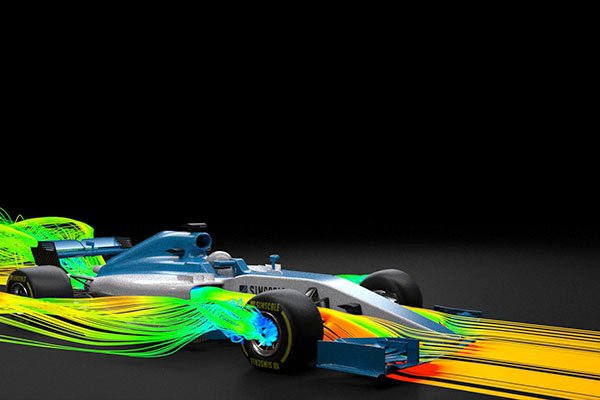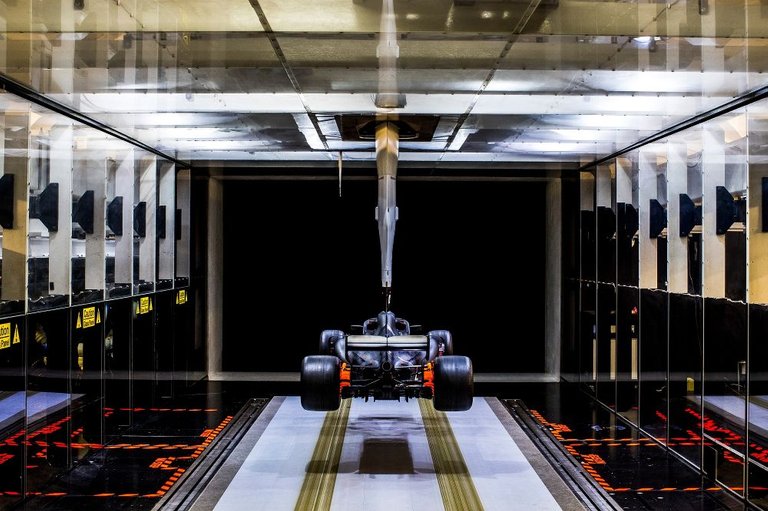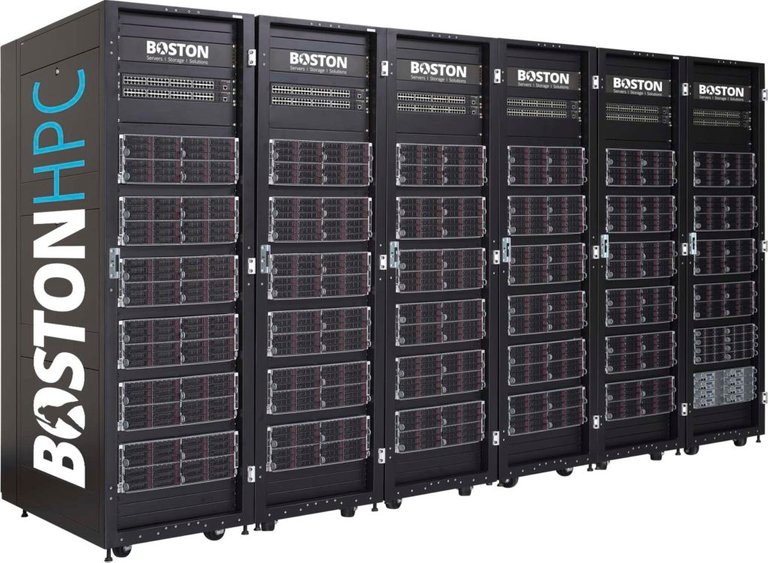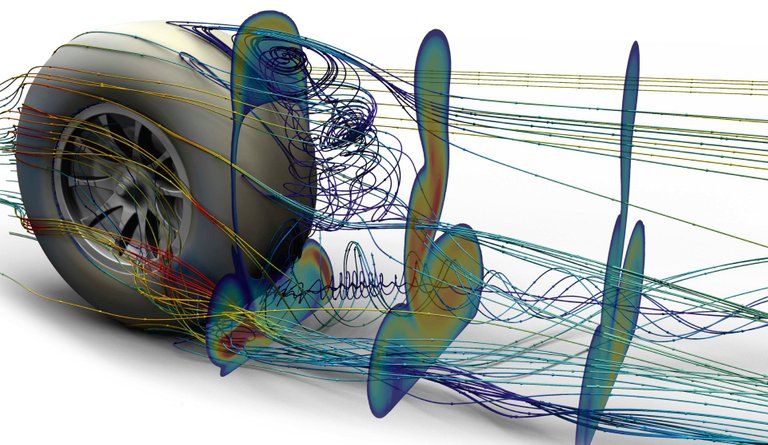
source
CFD is more than just a virtual wind tunnel as it allows testing on prototypes without actually having to build one. This saves on time and money.
Yesterday I wrote a post about Aston Martin Formula One getting their ducks in a row for next season by purchasing the latest CFD (Computational Fluid Dynamics) Cluster. I must be honest I had never heard of this before and decided to dig a little deeper to try find out where and how it fits in and why it is so important. I am a little wiser but it is very technical and have dumbed it down enough for me to try and get to grips with it.
We need to go back to 2008/2009 to see what Formula One teams were doing compared to now and why the FIA has placed heavy restrictions and budgetary cuts starting that came into place this season.

source
Mercedes Formula One top of the range wind tunnel.
Back in 2008 Toyota, Williams ,Honda and Sauber had purchased wind tunnels that cost anywhere from $20 -$50 million depending on size. The top teams back then were operating two wind tunnels 24 hours per day and they were full size. The testing involved using scaled model cars at 40 percent slowly increasing over the years to 60 percent as there were no budgets.
Using a wind tunnel night and day meant the teams were conducting in the region of 500 test simulations per week. This generally meant that at least 20 elements of the car could be played around with during the 7 day period.
CFD was being used in 2008 as part of the aero dynamic testing and with the software improving all the time the performance increased allowing for reduced hardware costs. BMW Sauber surprisingly was the leader in this field with a Albert 3 Super Computer with over 4000 Intel Cores.
In 2009 new restrictions came into play where teams had limited fan time in their wind tunnels known as WON or wind on time. CFD's were also restricted and measured in the number of Terra Flops which was the computer capacity. Between the years 2009 -2017 regulations were introduced and enforced to reduce the aero dynamic resources the teams now had. If a team used a wind tunnel for too long (wind on time) then they had less time for their CFD. Use the wind tunnel less and you had more capacity with your CFD and it was that simple.
Teams looked for loopholes and in technology you will find it as it moves so fast. This was a race with the design teams to complete as many CFD tests on their super computers within their Terra Flop allowance. The difference between the Formula One teams and the rest of the industry using this high tech stuff was they were after regulatory efficiency and couldn't care about financial. They needed more bang without worrying about the buck.
The turning point came when a team a special chip was designed alongside AMD but this came to a dead end in 2012 as the cycles had increased significantly allowing for more testing the FIA wouldn't allow any newer chips to be developed. The teams were finding away around the rules by developing their systems and the FIA hadn't really changed or stopped anything.
In 2018 the FIA allowed new upgrades to those that could afford it by getting rid of the outdated Terra Flop thinking and changing to a Mega Allocation Unit Hour. This they thought at the time allowed fairness for the smaller teams to carry on with the older technology.

source
Standard CFD cluster. Boston as a company has been specialising in cutting edge equipment working hand in hand with the various Formula One teams.
Boston was the leading supplier in CFD technology at the time and had an 8 node duel socket AMD system. There was a 4 node system which the teams could use to bridge across the old systems if needed. What had become evident with these upgrades is that if you didn't you were no longer competitive and were left behind. This caught the FIA out as these upgrades were massively expensive and not what they had envisioned.
There were 3 different cores available 48, 96 and 192each offering quicker processing speeds. Depending on which team was running which freed them up time for other aero dynamic programmes. This is where it gets complicated for me as the teams kept some of the cores dormant to give less operational cores per memory channel which created more bandwidth for memory. This is above my paygrade lol. By doing this it allowed them to complete twice as many tests as the year before.

source
Mercedes have the best car currently mainly due to it's superior downforce. This tells me they have the best of everything at their fingertips where as the others may not. It may not be possible to catch them if others don't upgrade and Mercedes will just stay ahead of the pack.
The result is now chip development is off the scale within the teams and they are achieving anywhere between 1000 and 1600 CFD tests per week on a model that has 200 million cells. Some teams are running of 1 billion cells which is a trade off for time with their capacity negotiated with the FIA.
What I found interesting is some teams upgraded to new systems in 2019 and not everyone could afford to. Aston Martin Racing are getting the very latest one for next season knowing the other teams most likely wont be able to due to budget caps. Wil this make a huge difference or not or is it going to be that important.
We have seen how simulators have changed everything in Formula One over the last decade and the systems they use are all cutting edge. It is fascinating to see it is not all about raw power but so much scientific research that it is like an arms race between the teams. It is not surprising to see teams holding their secrets close and always looking to steal each others ideas.
I do understand more why the FIA introduced budgetary caps as it would penalise the smaller teams by not having certain things or the latest technology. I just don't see them being able to stop this as technology moves quicker than the regulations being changed. What is current this year could be outdated next year and the best thing is to just let them get on with it.
References used
Racecar-engineering.com
Boston.co.uk
new.siemens.com
www.formula1-dictionary.net
www.arcindy.com/cfd-cluster-case-study-10apr14.news
Thanks for your contribution to the STEMsocial community. Feel free to join us on discord to get to know the rest of us!
Please consider supporting our funding proposal, approving our witness (@stem.witness) or delegating to the @stemsocial account (for some ROI).
Please consider using the STEMsocial app app and including @stemsocial as a beneficiary to get a stronger support.